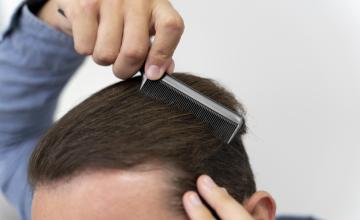Diffuse Hair Loss and How to Treat It
Unlike male pattern baldness (MPB) and female pattern hair loss (FPHL), which tends to follow one of the hair loss patterns defined by the NorwoodScale and the LudwigScale, Diffuse Patterned Alopecia (DPA) is characterized by diffuse thinning throughout the front, crown and vertex(crown) with no distinct pattern evident. However, like male and female pattern balding,Diffuse Patterned Alopecia patients typically preserve the stable "permanent zone" on the sides and back of the scalp and may sometimes retain a well-defined hairline. DPA is also a type of hereditary balding condition like and rogenetic alopecia (genetic hair loss).
Diffuse Patterned Alopecia (DPA) can be difficult to diagnose and, particularly in its early stages, may be confused with a similar condition known as Diffused Unpatterned Alopecia (DUPA). While both conditions are characterized by diffuse thinning, DUPA sufferers lack the stable permanent zone necessary for surgical hair restoration.
Treatment for Diffuse Patterned Alopecia
DPA often responds well to medical hair loss treatments like Propecia (finasteride) and Rogaine(minoxidil) and, due to the preservation of the permanent donor region, many DPA sufferers are candidates for hairrestoration surgery.
Conclusion
It’s essential that hair loss suffering men and women seeking medical and/or surgical treatment for diffuse thinning consult with a skilled and experienced hair restoration physician. Differentiating between DPA and DUPA is critical because Diffuse Patterned Alopecia patients frequently make good hair transplant candidates, whereas DUPA patients rarely do.





